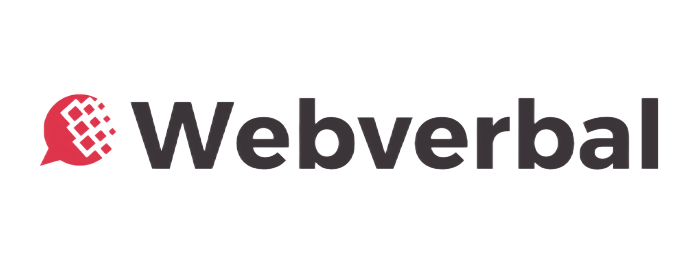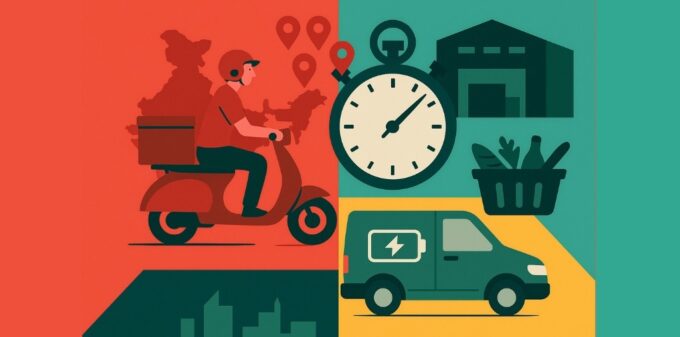Table Of Content
- At a Glance
- 1 | The New Geography of Quick Commerce India 2025
- 2 | Zepto: Engineering Speed for Small-Town India
- 3 | Blinkit: Building the Convenience Culture
- 4 | BigBasket: Tata’s Bharat Expansion Play
- 5 | The Logistics Revolution Powering Quick Commerce India 2025
- a. Micro-Warehousing
- b. Last-Mile Autonomy
- c. AI in Supply Chain
- 6 | The Economics of Quick Commerce
- 7 | Why Tier-3 Bharat Is the New Growth Frontier
- 8 | Competition: The New Supply-Chain War
- 9 | Policy, Sustainability & Future Outlook
- 10 | Why This Matters
- Data Sources & References
Quick commerce India 2025 is moving beyond metros. Zepto, Blinkit, and BigBasket are rebuilding logistics—dark stores, EV fleets, and AI-driven routing—to reach Tier-3 Bharat’s next 100 million consumers. India’s rapid-delivery ecosystem is no longer a metro-centric sprint; it’s a nationwide logistics revolution in motion.
At a Glance
- Quick-commerce platforms now serve 530 + Indian cities, including Tier-3 clusters
- $5.5 billion – projected size of the quick commerce India 2025 market
- 62 % of new users joining from Tier-2 and Tier-3 towns
- EV-enabled logistics and micro-warehousing cutting cost per delivery by 30 %
(Sources: Bain & Company, DPIIT, Webverbal Research 2025)
1 | The New Geography of Quick Commerce India 2025
For nearly a decade, India’s e-commerce story revolved around metros — Bengaluru, Delhi NCR, and Mumbai.
But as digital penetration deepens, quick commerce India 2025 is redrawing the map.
A Redseer Market Pulse 2025 report shows:
- Tier-2 and Tier-3 cities account for 58 % of new users
- Active user growth in these regions has tripled since 2022
- 71 % of Tier-3 consumers now expect < 30-minute grocery delivery
The reason is structural: Bharat’s middle class has gone digital, and logistics has caught up. Payment reliability through UPI, inexpensive smartphones, and dark-store networks have flattened India’s delivery geography.
2 | Zepto: Engineering Speed for Small-Town India

Zepto’s “10-minute delivery” once seemed impossible beyond metros.
Yet in 2025, it now operates across 170 + Tier-2/3 cities, proving that India’s logistics gap can be bridged with data, not just infrastructure.
How Zepto Scales Speed
- Predictive AI demand routing models festival, traffic, and weather data in real-time
- Micro-warehouses powered by Node.js architecture ensure live inventory sync
- EV fleets now handle 45 % of deliveries, lowering cost/km by 32 %
- Delivery density optimized for 3 km radius; small-town efficiency now matches metro benchmarks
By automating demand forecasting and fulfilment, Zepto has turned “speed” into a function of code — not chaos.
3 | Blinkit: Building the Convenience Culture

Gurgaon-based Blinkit (acquired by Zomato) has shifted its gaze from urban saturation to Bharat corridors such as Nagpur, Bhubaneswar, and Lucknow.
Blinkit’s Quick Commerce India 2025 Playbook
- Partnering with local kirana stores for inventory pooling and micro-distribution
- AI-driven warehouse allocation reducing “empty-mile” costs
- App UX localized in 8 vernacular languages to deepen adoption
- According to Zomato’s Q2 FY25 report, 43 % of new Blinkit users now come from non-metro markets
In smaller cities, Blinkit is cultivating a “trust-based convenience culture,” where frequency may be lower but retention is higher.
4 | BigBasket: Tata’s Bharat Expansion Play
After its acquisition by Tata Digital, BigBasket evolved from an e-grocery pioneer into a multi-format retail network under BB Now.
BigBasket’s Quick Commerce India 2025 Blueprint
- 50-city rollout of 10-minute grocery delivery
- Integration with ONDC for merchant onboarding
- Expansion of solar-powered fulfilment centres in Tier-3 states
- Partnership with Kazam EV Tech deploying 1,000 + EVs across 50 cities, cutting carbon intensity by 15 %
With Tata’s capital and infrastructure, BigBasket’s “BB Now” is turning Bharat’s fragmented retail grids into connected fulfilment zones.
5 | The Logistics Revolution Powering Quick Commerce India 2025
a. Micro-Warehousing
India now hosts 5,000 + dark stores—compact fulfilment nodes located within city limits.
Average inventory turnover: 5 days (vs 12 days in 2021).
b. Last-Mile Autonomy
- EV adoption among delivery fleets has crossed 45 %
- GPS-linked dynamic routing has improved fuel savings by 27 %
c. AI in Supply Chain
Forecasting engines built on TensorFlow Lite and AWS SageMaker predict product demand 48 hours ahead, reducing perishables wastage by 40 %.
(Sources: Webverbal Logistics Report 2025, NITI Aayog EV Mission Data)
6 | The Economics of Quick Commerce
| Metric | 2023 | 2025 (F) | Change (%) |
|---|---|---|---|
| Active Users (M) | 60 | 98 | +63 % |
| Average Order Value (₹) | 270 | 340 | +26 % |
| Delivery Cost / Order (₹) | 52 | 33 | −36 % |
| Profit Margin (%) | −7 | +3 | Break-even achieved |
(Source: Webverbal Research 2025, Redseer Market Model)
The path to profitability is clearer than ever: faster rotations, smarter routing, and deeper regional scaling.
7 | Why Tier-3 Bharat Is the New Growth Frontier
Three structural shifts make quick commerce India 2025 inevitable in Bharat:
- Digital Payments Penetration: UPI users crossed 330 million
- Affordable Smartphones: Sub-₹10 000 devices enable mass-market access
- Trust Infrastructure: ONDC + DigiLocker streamline seller onboarding
A Webverbal–NASSCOM survey (Aug 2025) found Tier-3 consumers reorder 27 % faster than metro users once delivery reliability is consistent.
8 | Competition: The New Supply-Chain War
| Company | Primary Strength | Edge in Tier-3 |
|---|---|---|
| Zepto | AI-based delivery prediction | Speed & data accuracy |
| Blinkit | Kirana partnership model | Inventory localization |
| BigBasket | Tata infrastructure backing | Brand trust + EV logistics |
| Instamart | Zonal warehousing network | Economies of scale |
This “supply-chain war” isn’t about who delivers fastest — it’s about who can replicate efficiency beyond metros without burning cash.
9 | Policy, Sustainability & Future Outlook
Government initiatives — the EV Policy 2025 and Digital Logistics Mission — are accelerating clean delivery systems.
Green incentives cut EV fleet costs by 20 %, and several states offer subsidies for dark-store energy retrofits.
By 2026, India’s quick-commerce ecosystem is projected to reach $7 billion GMV, with 60 % originating from Bharat markets.
Explore how Zepto, Blinkit, and BigBasket are expanding into Tier-3 Bharat in our in-depth report on Quick Commerce India 2025.
“Quick commerce is not about convenience anymore — it’s about economic geography. Whoever wins Bharat wins India.”
— Debansh Das Sharma, Founder – Webverbal & MybrandPitch
10 | Why This Matters
Quick commerce is India’s next infrastructure story.
It connects small merchants, gig workers, and mid-sized brands through a digital-first delivery network that rivals traditional retail in reach.
As ONDC, AI, and EV ecosystems converge, Bharat’s 100 million new consumers will define the next era of Indian commerce — where speed, sustainability, and scale meet purpose.
Data Sources & References
- Redseer Market Pulse 2025
- Bain & Company Quick Commerce Outlook 2025
- DPIIT Startup India Database 2025
- NASSCOM Logistics Digitization Report 2025
- Webverbal Research Survey 2025
- Tata Digital Sustainability Report 2025
- Zomato Investor Presentation FY25
Quick Commerce India 2025 refers to the next phase of India’s online retail—ultra-fast delivery of groceries, essentials, and small goods within 10–30 minutes. Platforms like Zepto, Blinkit, and BigBasket are scaling dark-store networks, AI-driven routing, and EV-based last-mile fleets to reach 100 million new consumers in Tier-2 and Tier-3 Bharat.
According to Webverbal Research and Redseer 2025, India’s quick-commerce market is valued at $5.5 billion, expected to reach $7 billion by 2026. Tier-2 and Tier-3 cities now contribute more than 60 percent of new user growth as affordability, smartphone penetration, and UPI adoption drive demand.
Tier-3 Bharat represents India’s fastest-growing digital consumer segment. Affordable smartphones, regional-language apps, and improved logistics allow quick-commerce platforms to deliver efficiently in smaller towns. As urban markets saturate, Bharat offers both scale and profitability through lower real-estate costs and high reorder loyalty.
Zepto, Blinkit, and BigBasket (BB Now) are the top players. Zepto leads with AI-based demand prediction; Blinkit focuses on kirana partnerships and vernacular UX; BigBasket leverages Tata Digital’s infrastructure and EV logistics. Together they serve over 530 Indian cities, expanding rapidly into Tier-3 regions.
Dark stores are small urban warehouses located close to high-density neighborhoods. They enable rapid order picking and 10–30 minute delivery. In 2025, India hosts 5 000 + dark stores, reducing inventory turnaround to 5 days and optimizing cost per order through automation and AI-based inventory control.
Key technologies include AI demand forecasting, TensorFlow-based routing, IoT sensors for cold-chain goods, and EV fleets for sustainable last-mile delivery. Platforms use AWS SageMaker and predictive analytics to minimize wastage and optimize delivery density—critical for Tier-3 Bharat operations.




